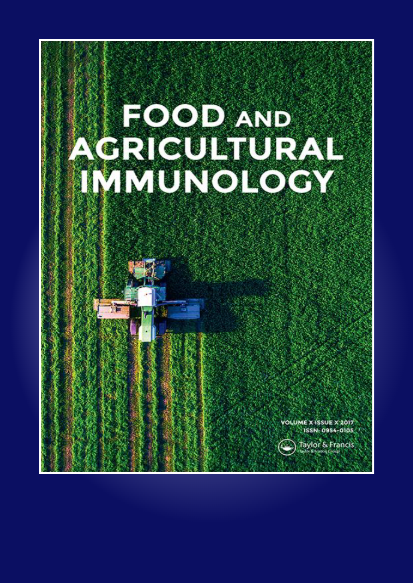Metabolomics and water migration analysis provides valuable insights into nutrient generation in Tartary buckwheat (Fagopyrum tataricum) seed germination
IF 2.1
3区 农林科学
Q3 CHEMISTRY, APPLIED
引用次数: 0
Abstract
ABSTRACT Seed germination of Tartary buckwheat is important for its biological generation of various nutrients. To investigate the nutrient differences during seed germination, the metabolic profiling and moisture status of Tartary buckwheat seed germination were quantitatively measured by ultra-high performance liquid chromatography mass spectrometry (UHPLC-MS) and NMR, respectively. The results showed water was predominantly in free status during the three stages of seed germination divided. Statistical analysis (PCA, OPLS-DA, KEGG) of 53 metabolites at different germination stages revealed the key metabolites of linoleic, flavonoid and phenylalanine biosynthesis during the seed germination. Furthermore, flavonoids biosynthesis was identified as the pathway with the largest difference significance at the second and third stages, while linoleic and phenylalanine metabolisms were screened out as the major pathways with most impact factors in the first and second and the third stage, respectively. The analysis provided valuable insights into the nutrient generation during Tartary buckwheat seeds germination.代谢组学和水分迁移分析为苦麦种子发芽过程中的营养生成提供了有价值的见解
荞麦种子的发芽对其生物生成各种营养物质具有重要意义。为了研究种子发芽过程中的营养差异,分别用超高效液相色谱-质谱(UHPLC-MS)和核磁共振(NMR)对苦麦种子发芽过程的代谢谱和水分状况进行了定量测定。结果表明,在种子萌发的三个阶段中,水分主要处于游离状态。对53种不同发芽阶段代谢产物的统计分析(PCA、OPLS-DA、KEGG)揭示了种子发芽过程中亚油酸、类黄酮和苯丙氨酸生物合成的关键代谢产物。此外,类黄酮生物合成在第二阶段和第三阶段被确定为差异显著性最大的途径,而亚油酸和苯丙氨酸代谢分别在第一阶段和第二阶段及第三阶段被筛选为影响因素最多的主要途径。该分析为苦荞麦种子发芽过程中的营养生成提供了有价值的见解。
本文章由计算机程序翻译,如有差异,请以英文原文为准。
求助全文
约1分钟内获得全文
求助全文
来源期刊

Food and Agricultural Immunology
农林科学-毒理学
CiteScore
5.30
自引率
6.70%
发文量
52
审稿时长
2 months
期刊介绍:
Food and Agricultural Immunology is an international open access journal publishing original immunological research with applications in food, agricultural, environmental and veterinary science. Submissions describing the use of immunological techniques and methods are particularly welcomed.
The journal aims to expand our understanding of the interactions at the interface of food and immune systems including studies on:
-Development of diagnostic systems – all types of ligand-based assays, e.g. antibody, aptamer
-Application of ligand-based assays for the detection or identification of molecules of interest in food science, agricultural research, veterinary investigations and clinical systems relating to food allergy or sensitivity to agricultural chemicals
-Effects of food on the immune system
-Studies on allergy and allergic reactions
-Investigations into food allergies
-Development of allergen-free food systems
-Development of novel assay formats
-Applications of assay systems to the monitoring of food items in relation to safety and labelling
-Food quality issues, e.g. speciation, adulteration and contamination
-Comparisons between different analytical techniques
The journal publishes research and review articles and is essential reading for food scientists, immunologists and all those concerned with the interaction between food and immune systems.
 求助内容:
求助内容: 应助结果提醒方式:
应助结果提醒方式:


